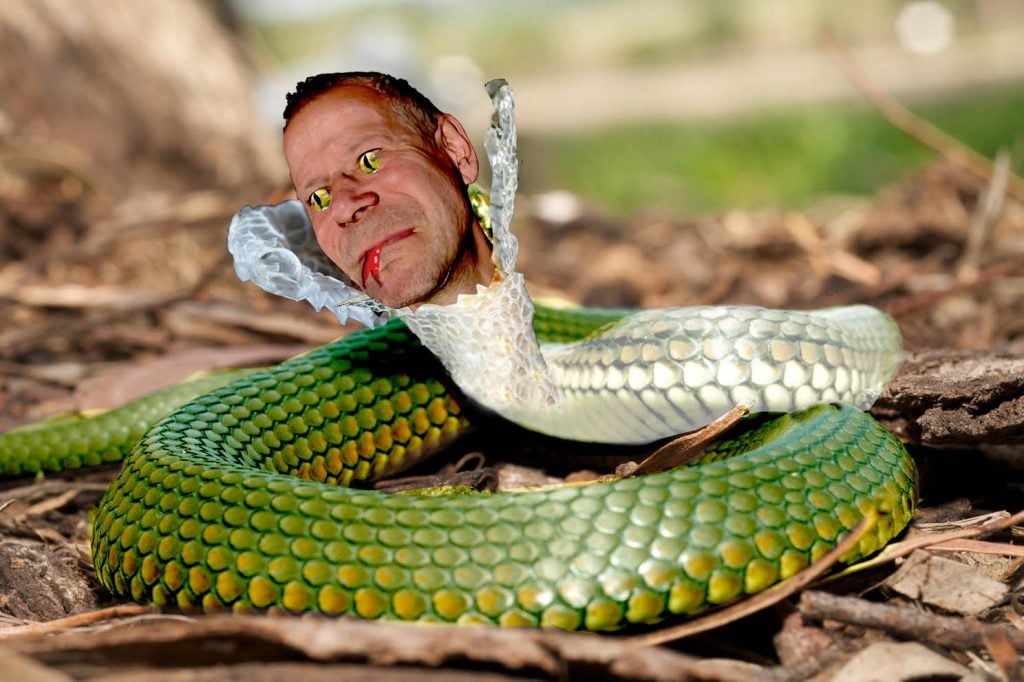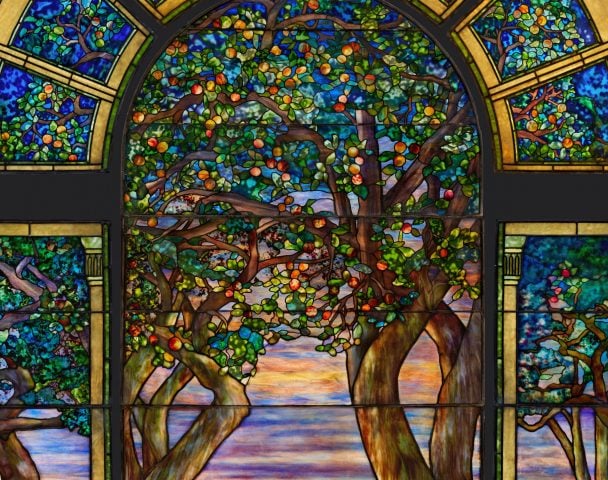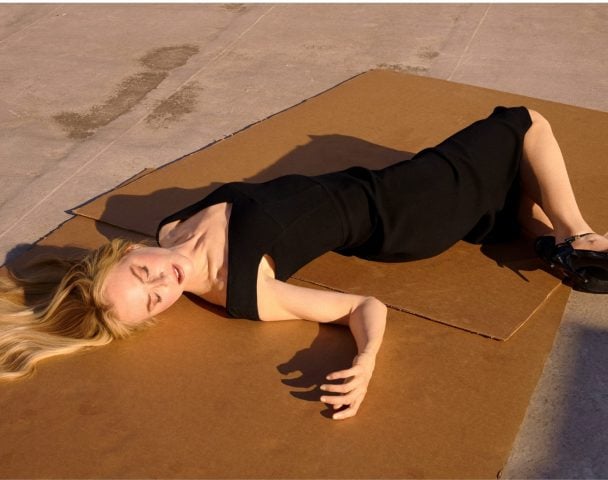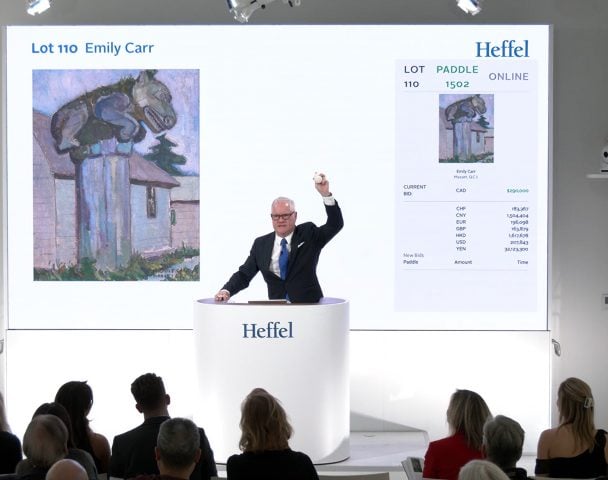This is a twist on Arthur Miller, where the salesman in fact comes to terms with his new identity and the concomitant change effectuated by it. In other words, dear reader, my piece could be titled Death of an Art Market Journalist. Incessantly running from fair to fair, auction to auction (and back again), scraping the barrel for numbers, information, and gossip was never much more than an ill-fitting suit—an excuse to find fodder for my art videos—which have now found homes in NFTism exhibits and platforms from Athens to Tokyo. Not bad for a late-middle-aged guy pushing 60.
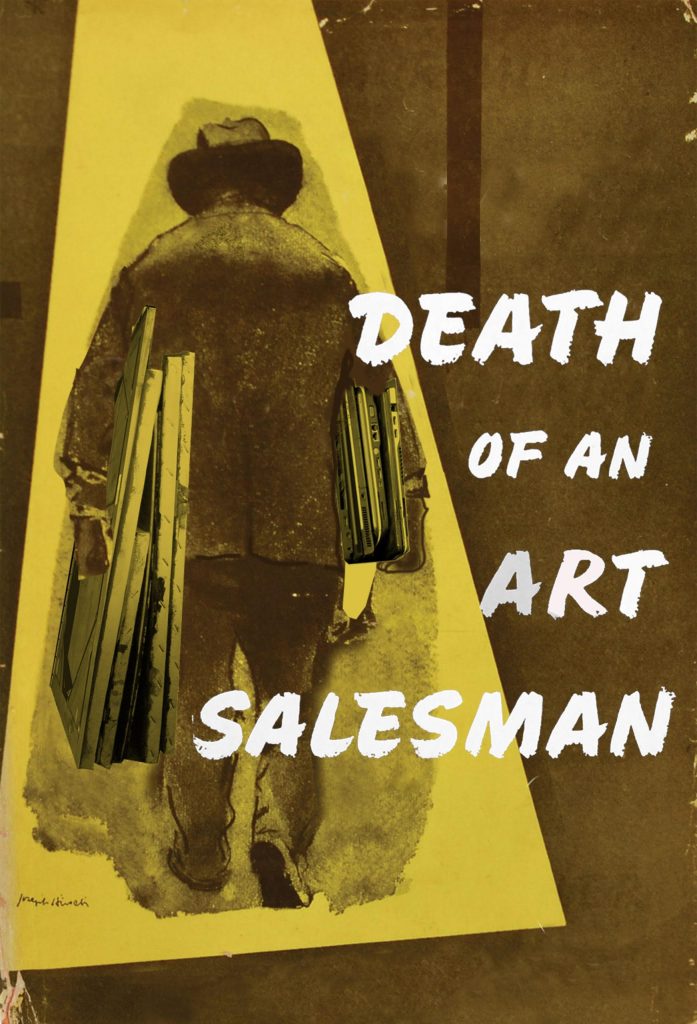
Death of a (Lousy Art) Salesman (and Decent Journalist). Image courtesy of Kenny Schachter.
This transition has come none too soon: T-Mobile just shut me down, terminating my phone service for “excessive roaming,” which they define as “using more than 50 percent of your voice or data off-network for an extended period of time.” Having clocked a personal best of 16 hours and 7 minutes of screen time in one day during quarantine, that’s not the easiest thing to swallow. Before I bow out though, I have a couple of scoops to drop—old habits die hard.
Sotheby’s Linda and Harry Macklowe sale was a mega market blowout, a personal best for the auction house. The biggest picture of the Macklowes’ was not the billboard-sized Twombly that fetched $58,863,000, but rather the actual 42-foot billboard erected by Harry, plastered over the façade of 432 Park Avenue, to celebrate his marriage to Patricia Landeau, the relationship that precipitated the sale in the first instance. Not the most subtle way to celebrate one’s nuptials, granted. The three Ds of the art world still hold sway—let’s hear it for divorce, debt and death.
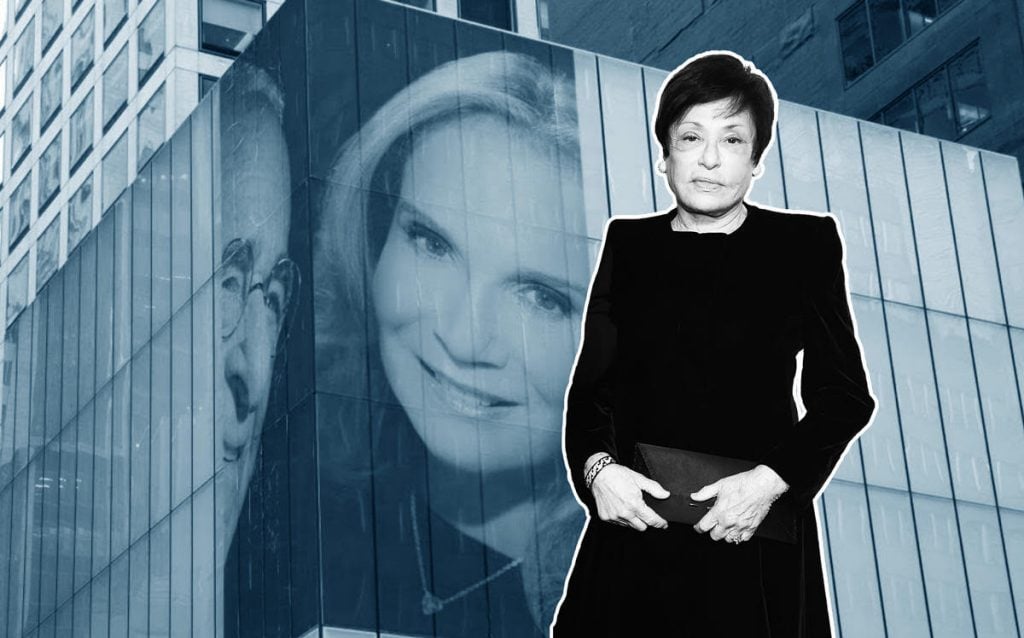
Image Courtesy of Getty Images, Twitter and especially, Harry Macklowe.
Self-made Taiwanese computer chip billionaire Pierre Chen rose from abject poverty to become one of the world’s leading art guarantors, if not the biggest, and his fingerprints were all over the Macklowe trove. He can plenty afford it. According to Forbes, Chen’s company, after some rocky performance in the recent past, has skyrocketed: “Yageo’s sales last year rose by 63% to $2.4 billion; net profit amid the global pandemic rose by 87% to $848 million. This year, growth has been even better. In the first quarter, sales rose by 136% from a year earlier to $465 million; net profit was $179 million, up 113.8% from a year earlier. Yageo’s Taipei-traded shares have gained 48% in the past year. Sino-Pac Investment Service today predicted they have room to raise more than another 20%.”
Unconfirmed intel had Chen backing the Rothko, Richter and more, as well as the de Kooning on offer in the spring. What I can say is that Chen, as active in art as computer chips, was also the seller of Peter Doig’s Swamped at Christie’s—a good way to describe how deluged in dollars he is after the Doig sold for a record setting $39.9 million. The Doig was said to be guaranteed by François Pinault (according to my sources, also unconfirmed at the time of this writing)—are you following me? The guarantee game is a convoluted way for rich folk to weaponize art collecting into a speculative financial derivative largely outside of the purview of the Securities and Exchange Commission. And people say crypto is crime (cue eyeroll).
Representing an uptick in Warhol’s recently sagging market performance was Sixteen Jackies, purchased by Macklowe from Christie’s (art’s version of musical chairs) for $15,696,000 in 2006, and selling for $33,872,250 this month—I love these numbers which give Fibonacci a run for his money. The Warhol was said to be guaranteed by Bill Bell, an LA-based TV producer whose dad created ever-enduring soaps “Another World,” “The Young and the Restless,” and “The Bold and the Beautiful.” And whose dad also led a soap-opera life, but let’s leave that story for now. Wrapping up the Macklowe sale, London’s Lisa Reuben was the purchaser of Cy Twombly’s Untitled (1961) for $20,946,000
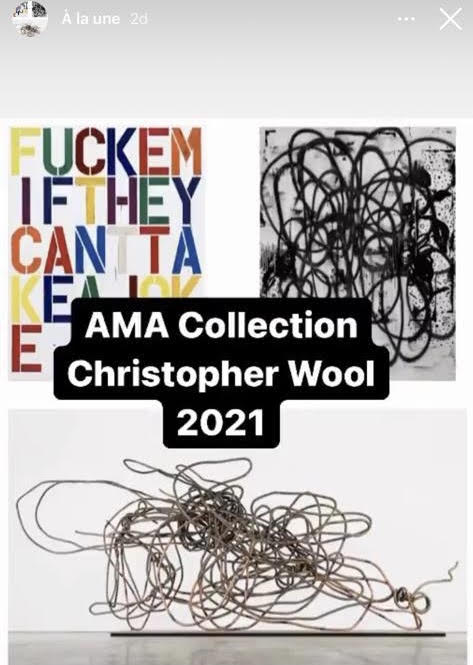
In this day and age, we give it all away (our privacy anyway). Laurent Asscher’s covetable collection posted on Instagram.
Entrepreneur and collector Laurent Asscher bought Christopher Wool’s Untitled silkscreen and spray painting, also at Sotheby’s, for $13,190,250 (he posted it on his Instagram account) dispelling Artnet News’s own Katya Kazakina’s report that the Wool market was moribund, though I managed to lose a small fortune selling mine at Phillips. You’d think I would have learned from my past coverage of the perennially third-place auction house. Asscher is now better known as the brother of Simon de Pury’s girlfriend Carol. Here’s a shout out to Simon, who recently celebrated his 70th birthday.
Back to Christie’s. I heard Dominique Lévy and Brett Gorvy were backers of the three Wools from the Steinberger sale, that Steve Wynn bought the unusual Van Gogh painting of a boy for a whopping $46,732,500 against a $5 million to $7 million presale estimate, and the Fertitta brothers unsurprisingly bought Warhol’s Muhammad Ali at Christie’s for $18,107,500, having made their fortune in ultimate fighting, which could be a euphemism for the art world.
Besides licking my wounds from my Wool, I also lost on a major Mike Kelley “Memory Ware”—I’ve been deaccessioning more than usual in the process of buying my first house. It’s amazing that artists like Nicholas Party, Emily Mae Smith, and Avery Singer are making historic prices with little or no history in the market while contemporary masters like Kelley languish. This is mind-boggling but ultimately not surprising in light of quick-fix, constricted attention spans of the onto-the-next-big-thing, social media-scrolling generation. Maybe I should stick to NFTs. With the third iteration of my no-reserve online Hoarder auction upcoming at Sotheby’s from December 8 to 21, my motto—”my loss is your gain”—rings as true as ever.
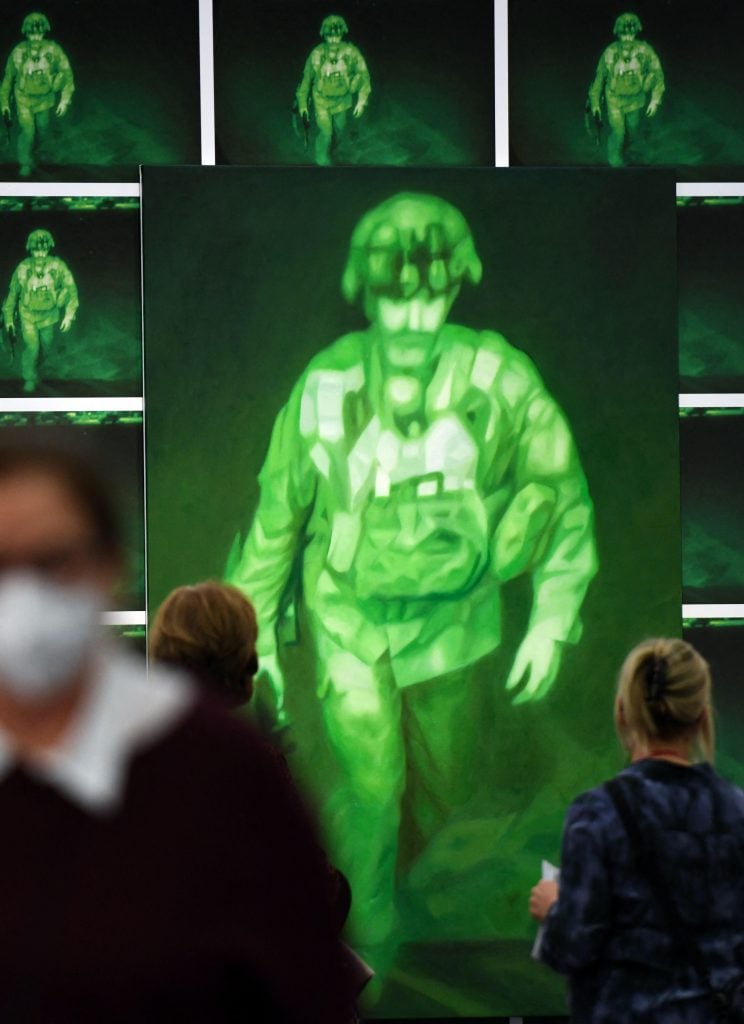
Detail of my installation “The Last Soldier” that sold at Galerie Nagel Draxler during Art Cologne last week. Photo: Ina Fassbender.
In the process of shedding my previous skin as a journalist—off the back of shows in Greece and Cologne and about to present my most ambitious NFT installation to date at Art Basel Miami Beach with Galerie Nagel Draxler, I feel like I am cheating on the art world. Miami, by the way, will be nothing short of a bacchanalian orgy, the first outing of Europeans (those allowed to attend, anyway, following Austria’s just announced re-lockdown) after being caged for nearly two years. In conclusion, life is just a glitch (a digital art sensibility like Ax-Ex)—fast-paced and filled with static—so we may as well make the best of it.
